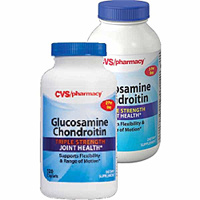Since 1984, the Arthritis Research Institute of America [a 501(c)(3) Charity] has focused 100% of it\\\'s efforts on osteoarthritis research. Over 3,700 volunteers from Florida have participated in the longitudinal Clearwater Osteoarthritis Study. The study was designed to discover why some people develop this disease and others do…
Staff Login
Arthritis Information
What is Osteoarthritis?
As our joints age, they begin to lose their ability to act as shock absorbers between bones.

The cartilage that covers the ends of weight-bearing joints such as the knee, hips and ankles begins to break down. The joints in the hands, feet and cervical spine are also common areas for osteoarthritis to develop.
As the cartilage breaks down with age or after an injury, the smooth surface that would normally cushion the movement of bones that form the joints becomes thinner or rougher. In severe osteoarthritis, the cartilage will wear away completely and cause bones to grind each other without a shock absorber. Pain, inflammation and lack of mobility are the results.
As one’s osteoarthritis becomes more severe, pain and immobility will severely affect the patient’s ability to enjoy life. Aging and being overweight can increase your chances of developing osteoarthritis, as well as an injury to a certain joint or a family history of the disease.
What are the symptoms of osteoarthritis?
Osteoarthritis is the “old bones” and “snap, crackle and pop” that affects more than 27 million Americans. According to the American College of Rheumatology, more than 70 percent of Americans older than 70 have x-rays that show osteoarthritis.
Deep, aching pain in the joints is often the first symptom of of the disease. After a workout, it may take longer to recover. Activities that never caused discomfort begin to cause pain. Joints may begin to feel stiff when it’s time to get out of bed or after prolonged sitting. Crackling joints that look larger or change shape may be another symptom.
How is it diagnosed?
An x-ray and an exam by your doctor will determine if you have osteoarthritis. Patients usually have a good idea that something’s amiss when they visit their doctor to ask about joint pain and inflammation. Complicated and expensive lab tests aren’t needed to diagnose osteoarthritis.

How can I live with osteoarthritis?
Osteoarthritis cannot be cured, but its symptoms can be managed. Some patients find that topical agents such as capsaicin cream and taking acetaminophen help them control pain and stiffness. Other patients with osteoarthritis of the knee have found relief taking chondroitin glucosamine joint fluid, although it doesn’t seem to be as effective for patients with osteoarthritis in other joints. Much research is still needed in this area.
Movement that doesn’t stress the joints, but strengthens the muscles around them, may also be beneficial. Ask your doctor to recommend an exercise that is low impact, but beneficial to your mental and physical health.

What if I need surgery?
More severe cases of osteoarthritis may require prescription medications or corticosteroid injections. Surgery to replace the affected joint is a last resort when other methods aren’t effective to treat pain and immobility. Arthroscopy that is minimally invasive will allow your doctor to remove damage in the cartilage without a major surgical procedure or visible scars. In some cases, a joint may need to be replaced to restore its ability to function.
A new joint called a prosthesis is used to replace the damaged area. The prosthesis can be made of plastic, metal or a combination of both.
© 2012 The Arthritis Research Institute of America | All Rights Reserved.





































